In the 20 years I’ve been in this business as well as the more than 10 years I’ve spent blogging, I have seen a lot of staircases. In person, and in photos. Some good, many that are just plain bad.
This trip to Paris is Terreeia’s first trip (my third). This time I was struck by the style of all the Parisian balconies and noticed that many (or even most) of them are really busy. But they still look gorgeous because of the architecture and tone-on-tone colours of the buildings.
And it got me to thinking. Maybe there’s nothing wrong with a really busy wrought iron staircase? Maybe it’s everything attached to the staircase that makes it look dated and wrong.
Read on and tell me if you agree with me:
One of the things that makes Paris so beautiful is the uniformity of the buildings. They are mostly all the same colour (a yellow beige, sometimes green beige) and the sweeping style and delicate filigree that characterizes Paris architecture today is largely a result of George Haussmann’s work. An architect commissioned by Napoleon III to open, unify, and embellish Paris.
On our tour of Paris, the first day after we arrived, our guide took us to this street (above) to show us what the old Paris used to look like. The streets were dark, dismal and so narrow there was barely enough room for one cart to traverse.
Here’s another photo of an old Paris building:
It was puffer weather when we first arrived in Paris (below):
And of course here are what the buildings look like now:
And what makes Parisian staircases so pretty, is they often have black and white (or grey) tile or black checkerboard tile to repeat the wrought iron railings.
The cafes throughout Paris are so charming. Happily, everyone got the memo about installing bistro chairs and adorable round tables that often face the street so the patrons can people watch as they sip coffee and eat croissants.
Many of them have planters with boxwood or beautiful, coordinated, plant material like this (below):
Photo by Maria Killam
In the little town where we live back home, we have a little bakery/cafe where the owner hired a designer for the interior and he did a great job.
But then, the following summer, he decided to add an outdoor patio (and obviously thought he could do it without his designer). So he built a huge, out of scale pergola, and then picked up a bunch of bad residential patio furniture with multi-coloured umbrellas from the nearest big-box store.
I was so underwhelmed, I have not been back since.
It’s the details that often make or break any design project. One decision on something seemingly small and inconsequential can ruin a staircase, kitchen or bathroom, (the list goes on and on) that otherwise could have been perfect.
Ask Maria: My Husband Got One Choice and It’s Wrong, HELP!
The view of the rooftops outside our hotel room in Paris (above)
Here the railings get more simple at the very top (above)
In the middle of our trip to Paris, we drove out to Normandy and stayed in this Chateau, built in 1763. The floor tiles are black and orange beige. The steps are concrete.
Notice the curvy style of the wrought iron railings (below):
And how it relates to this railing (below).
I took this photo in a new build I was visiting over 10 years ago. The designer who worked on this project confided that the original design (by the client) was MUCH busier than it is, even now, before she intervened.
I posted it here because it was so similar to the staircase above.
Well, what do you think? Which one is better? Why?
Here’s another staircase from a Chateau in France. Notice the same black tile repeated in the entry flooring.
Classic and timeless.
So timeless, that it has been the same in the Chateau we stayed in, for over 250 years.
Here’s the 24″ x 24″ parquet flooring everywhere else:
And the bathroom attached to our room? Plain white tile that would not need replacing anytime soon.
At breakfast, when I asked the owner how many bedrooms were in the chateau, he replied that he didn’t know. But he did know that it had 99 windows and he had replaced 45 of them, haha.
The mirror reflects the windows and beautiful grounds behind the Chateau
Here’s a typical Tuscan inspired staircase. The black wrought iron gets lost among the wood stained bannisters, cherry flooring and pedestrian pink beige carpeting.
Suddenly it looks trendy instead of timeless.
And we start looking around for white paint and a simple design to update when we can (below).
Over to you my lovelies! What do you think? Do we need to break open some white paint cans and install some black and white checkerboard flooring or what?
Parisian or Tuscan? I vote Parisian.
If you would like your new build to fill you with happiness when you walk in the door, check out our new build eDesign package here.
Related posts:
Is Your Bath Perfect or Perfectly Nice?

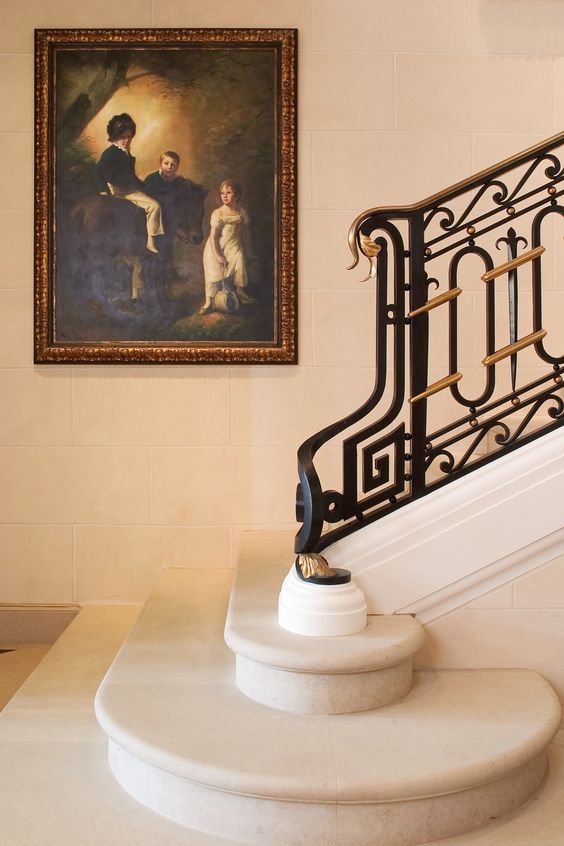
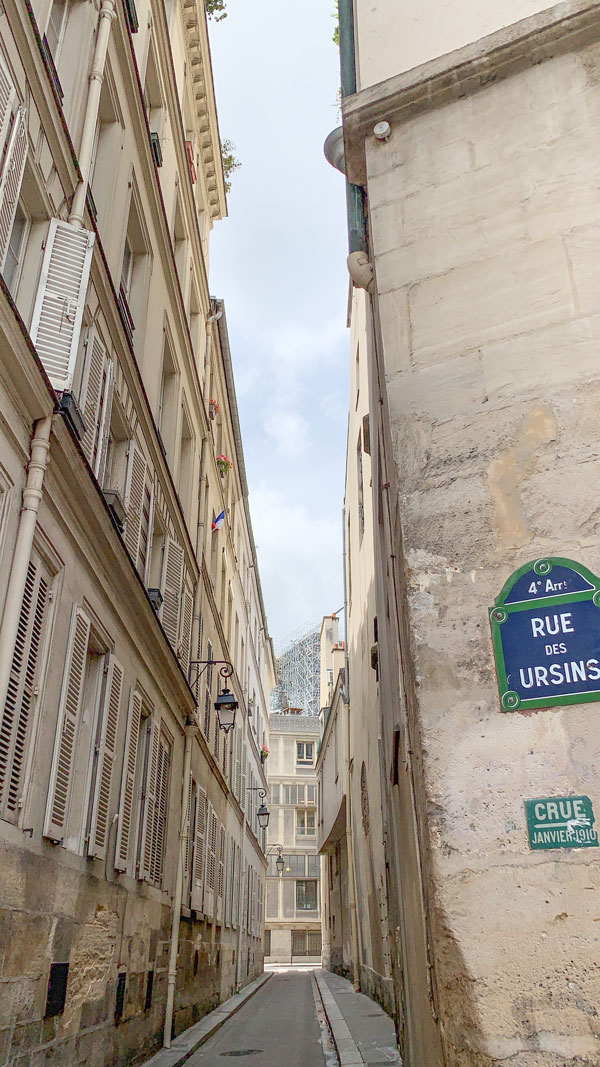
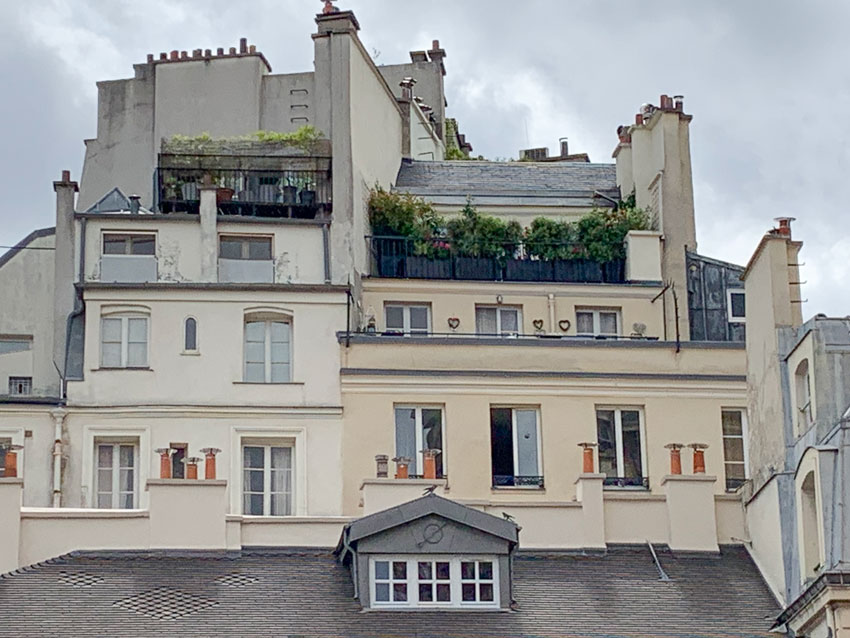
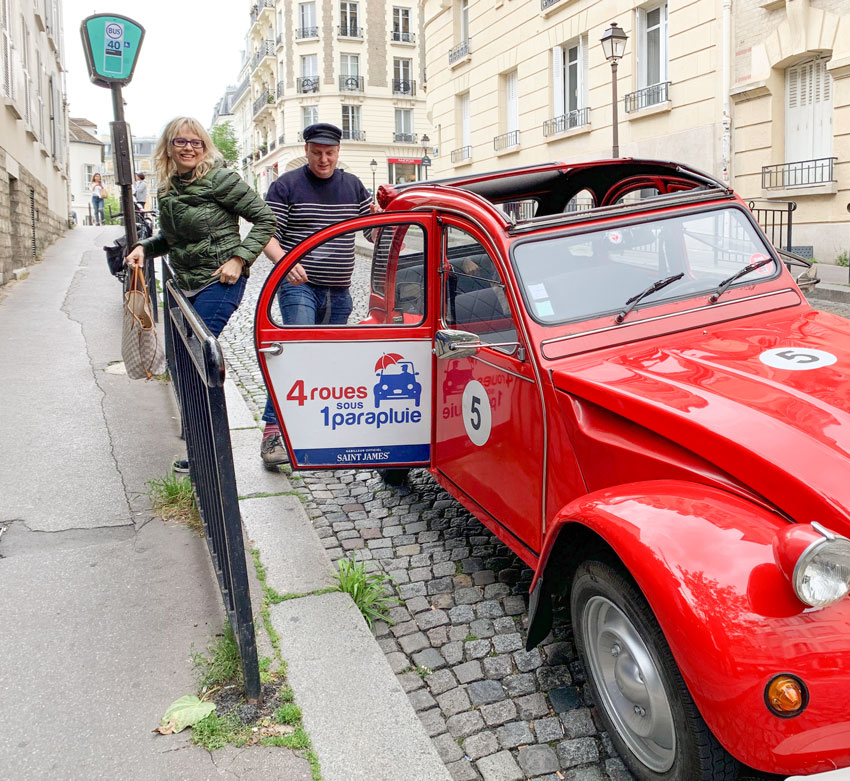
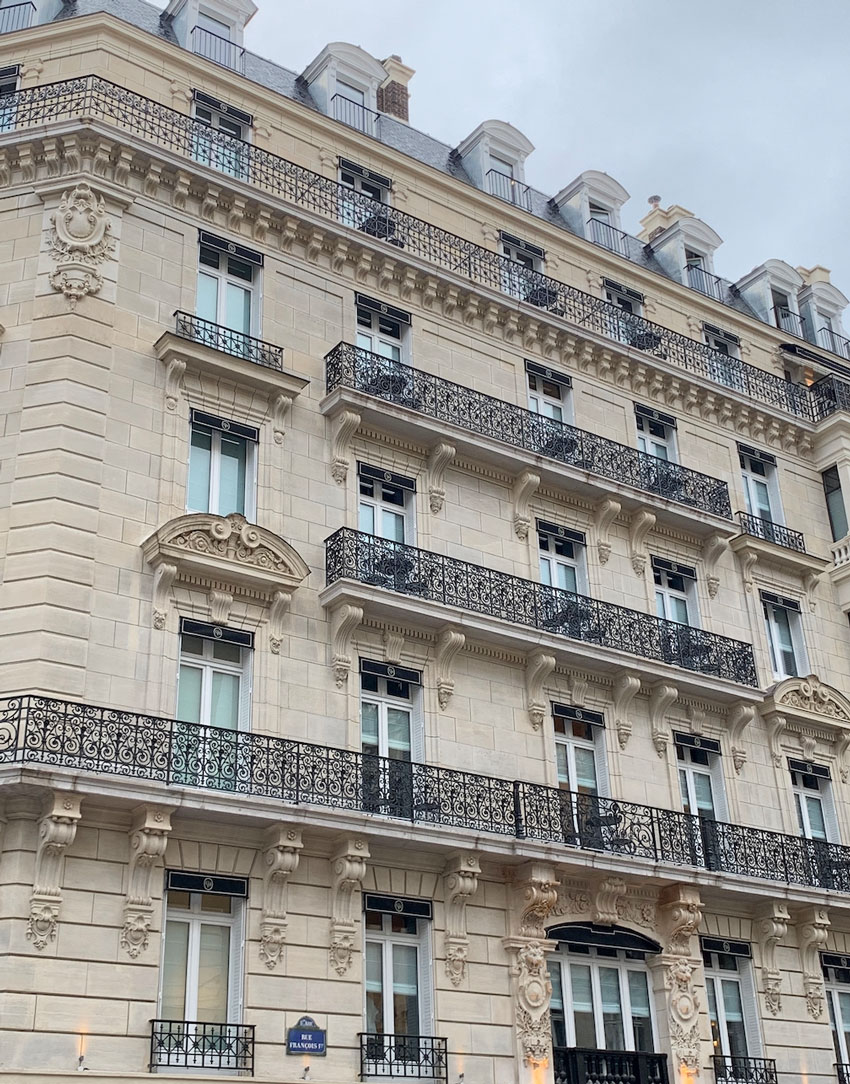
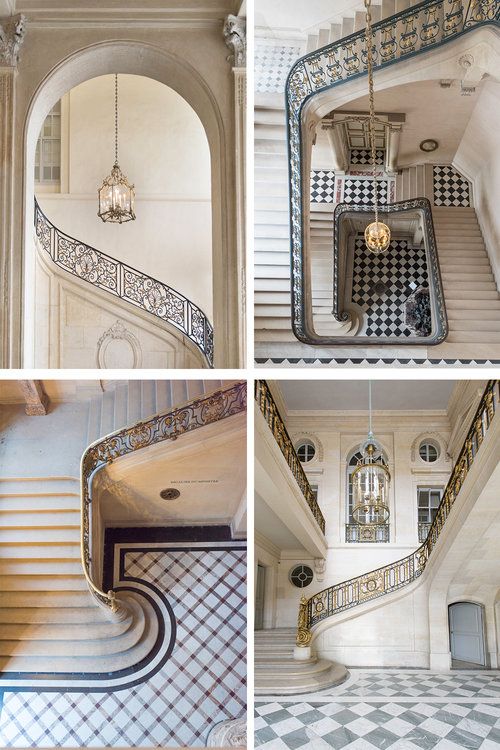

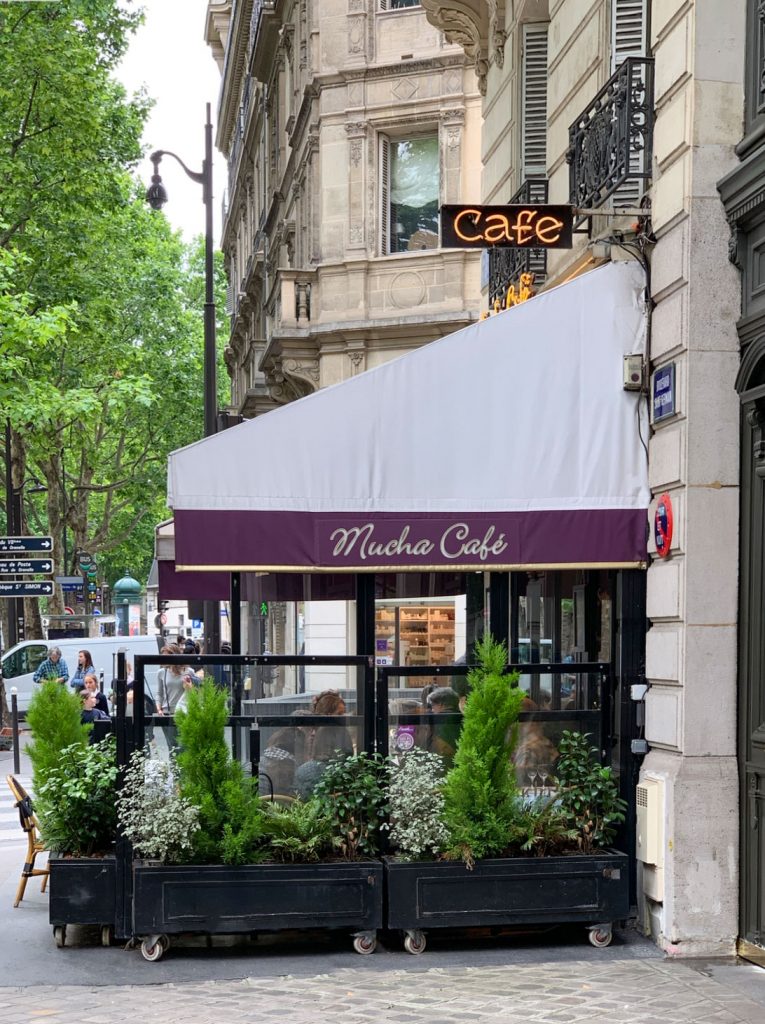
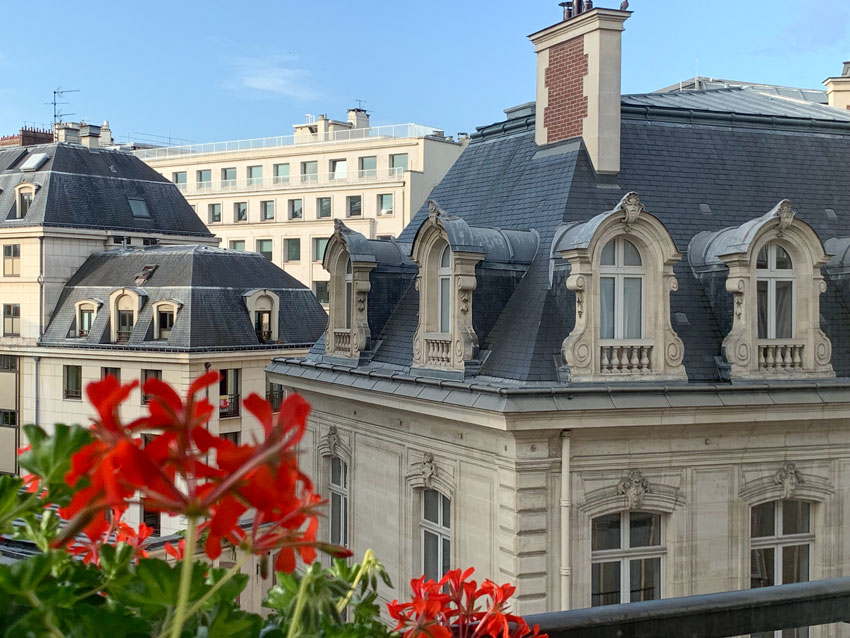
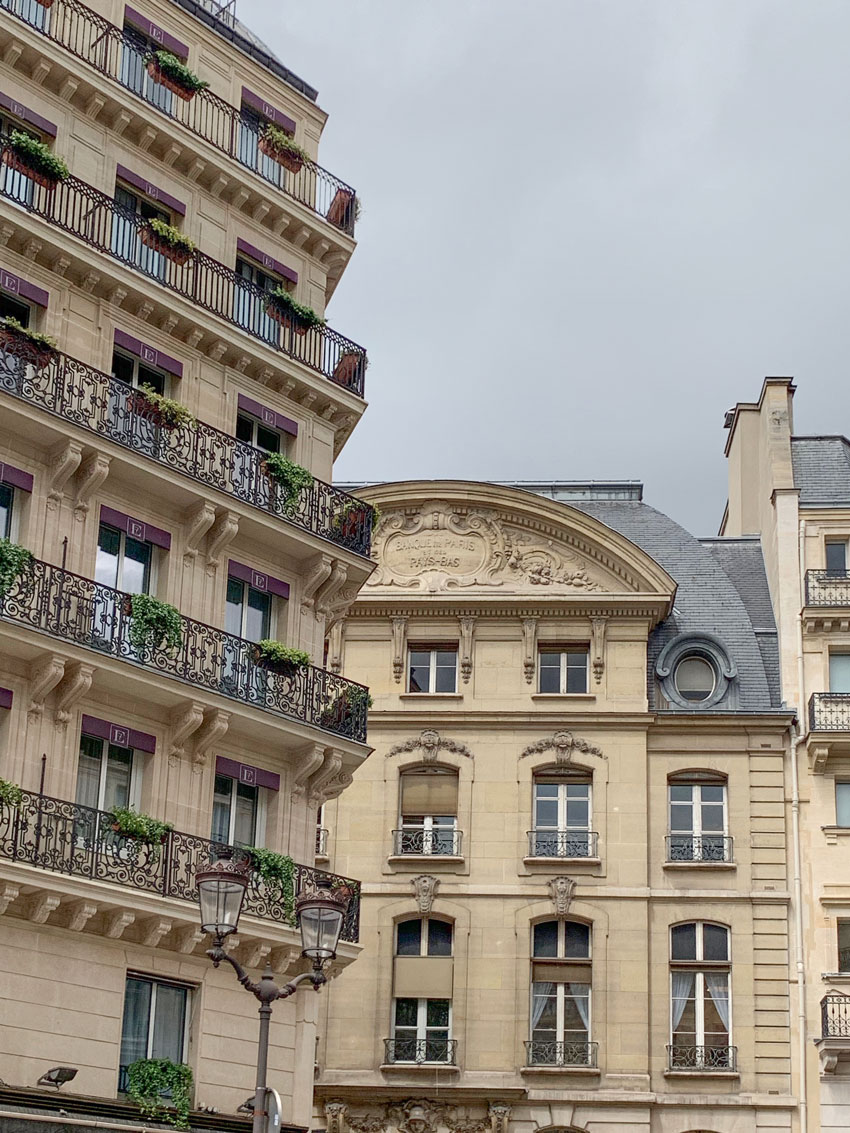
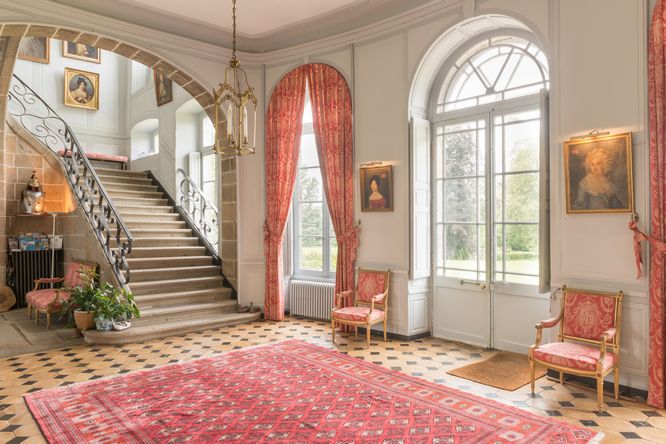
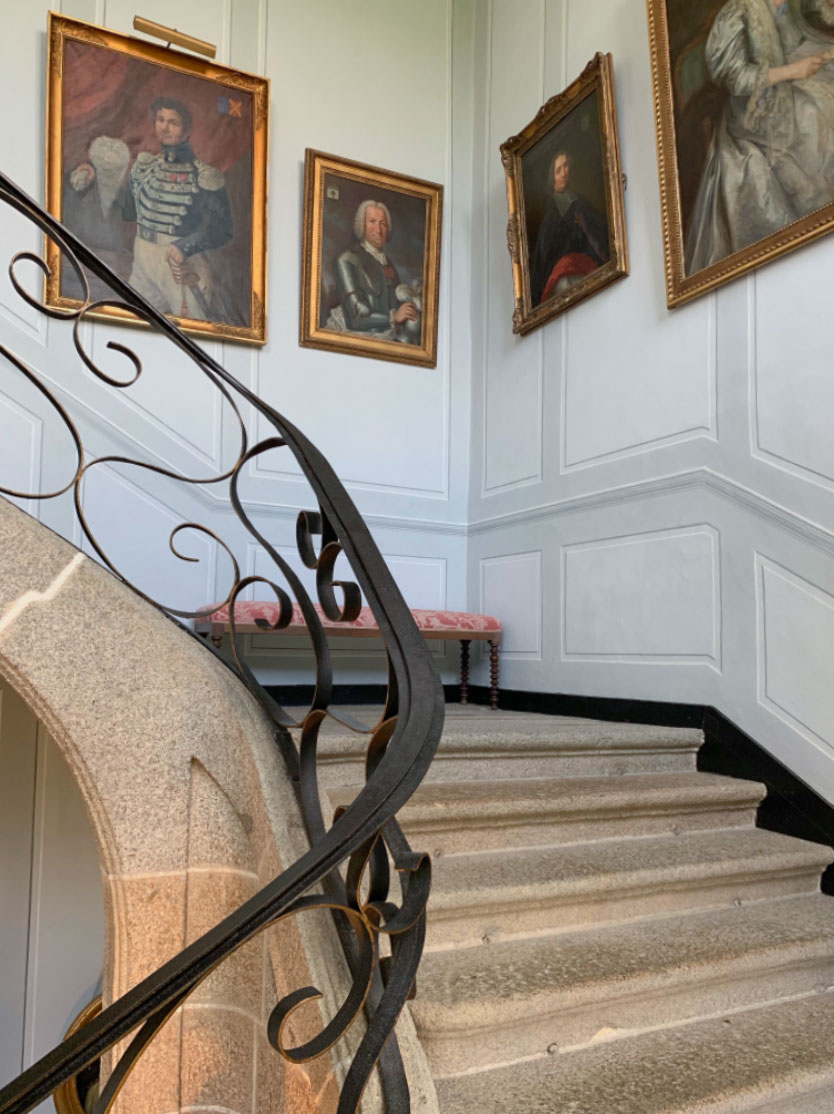
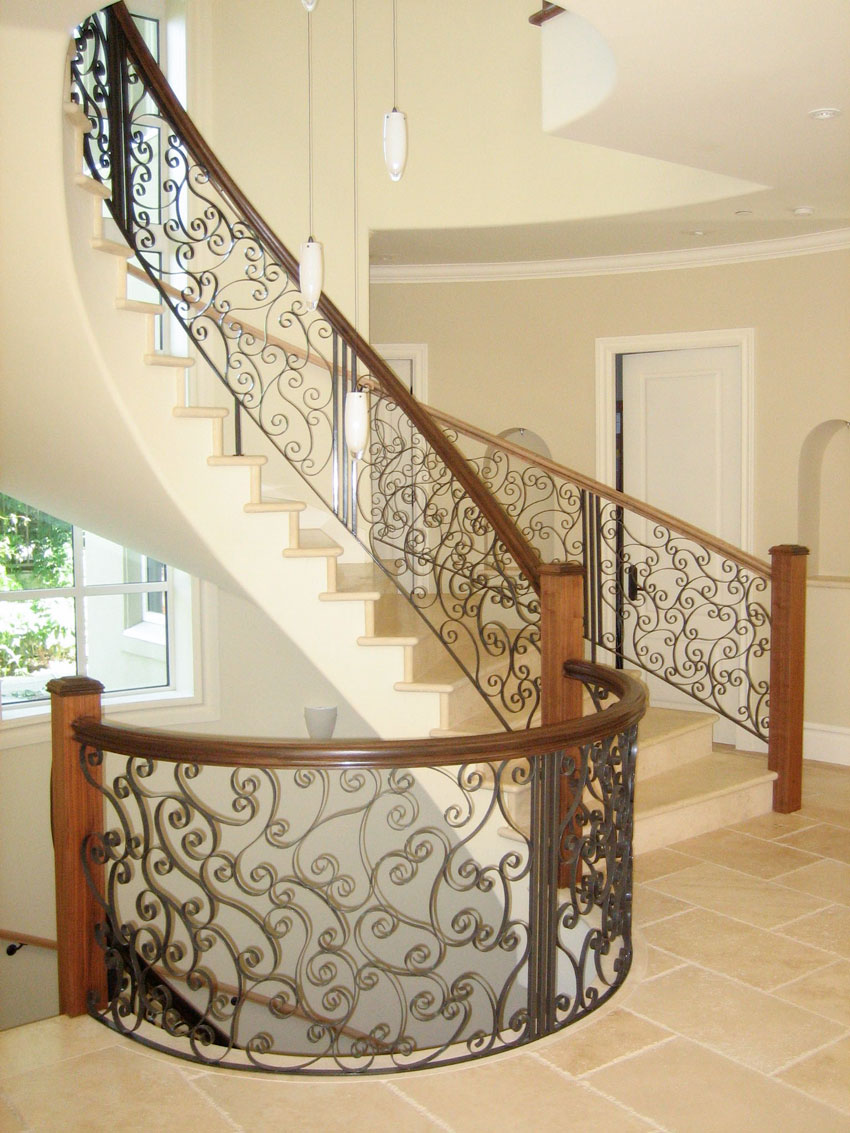
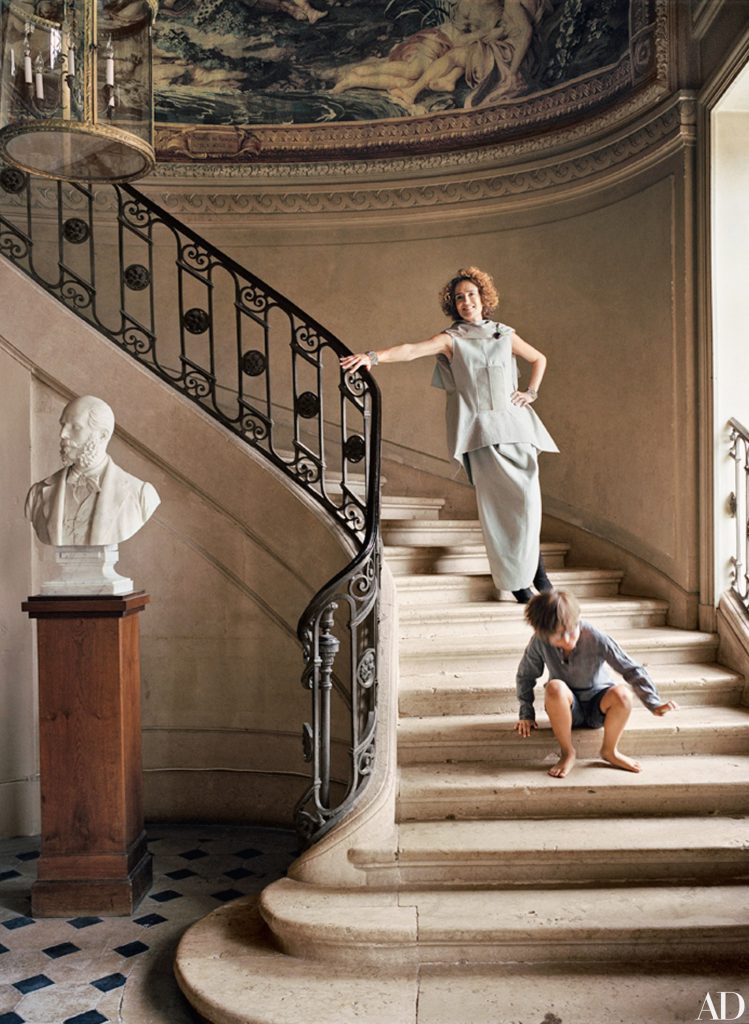
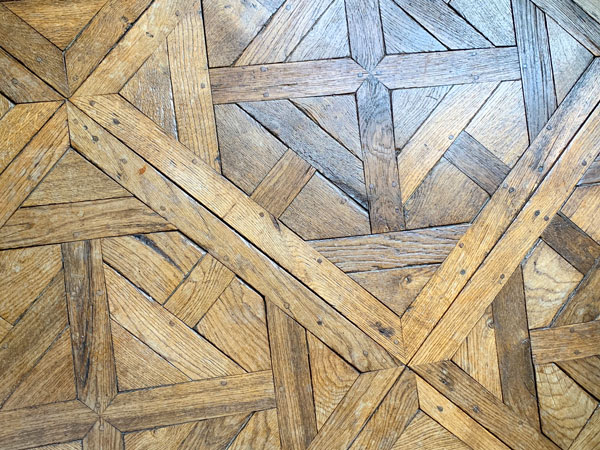
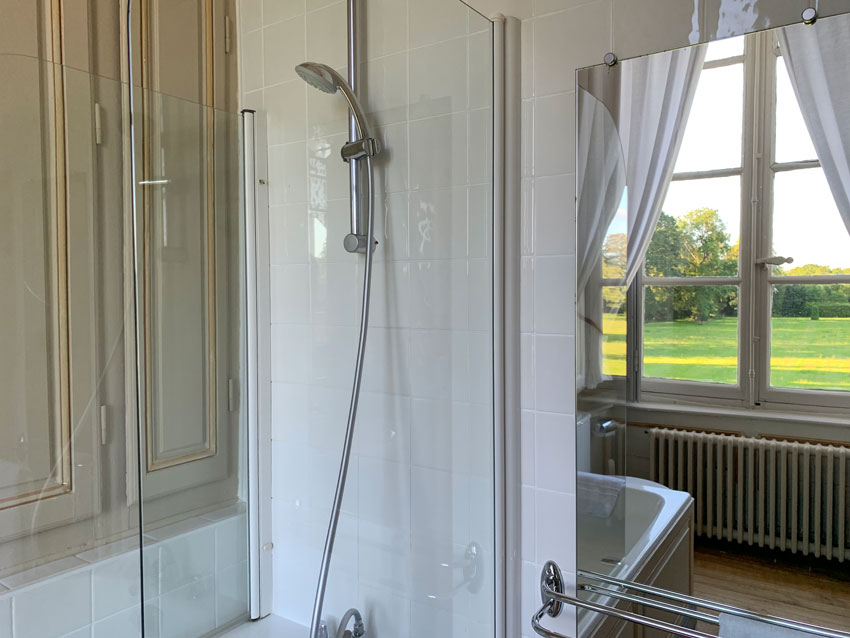
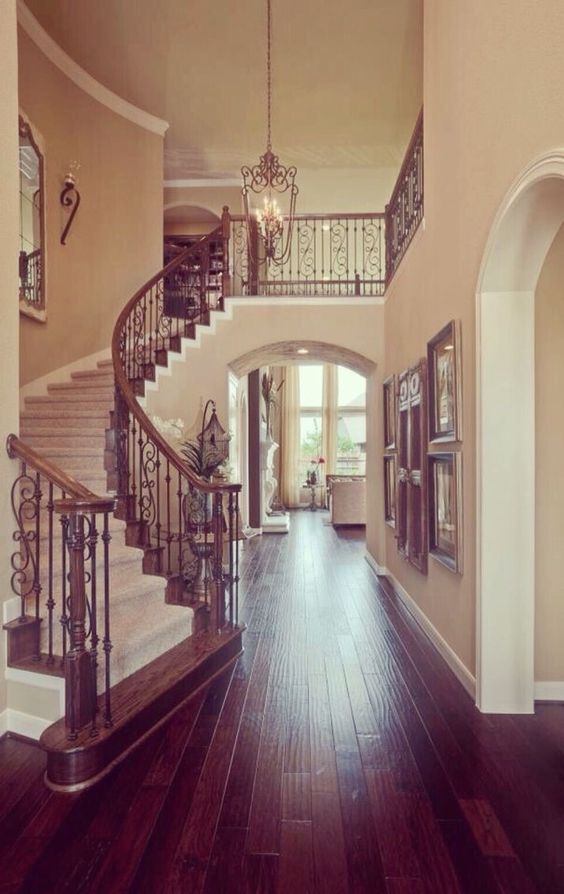
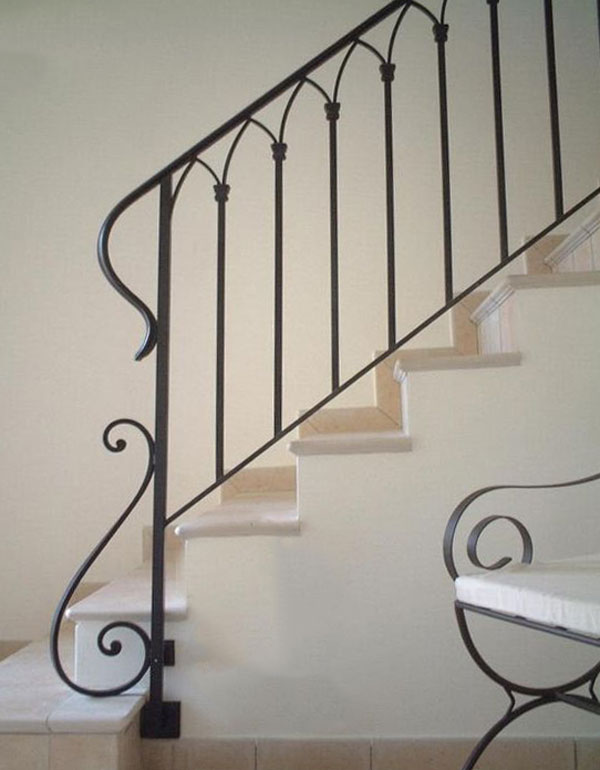
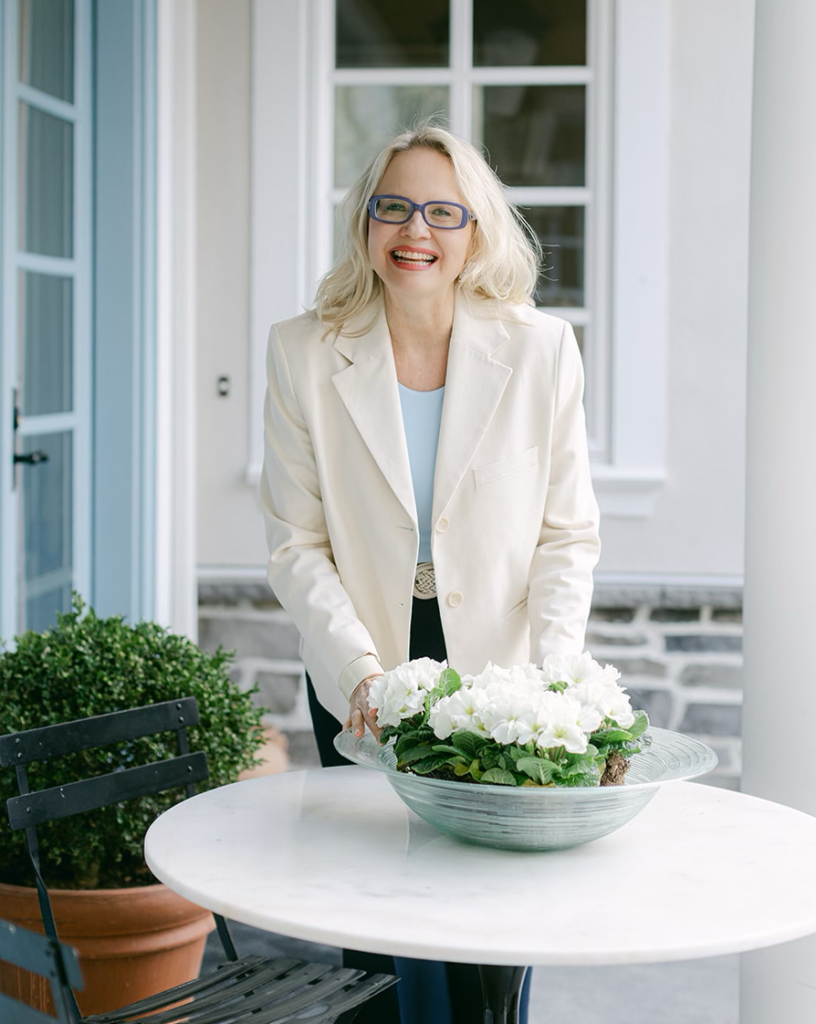



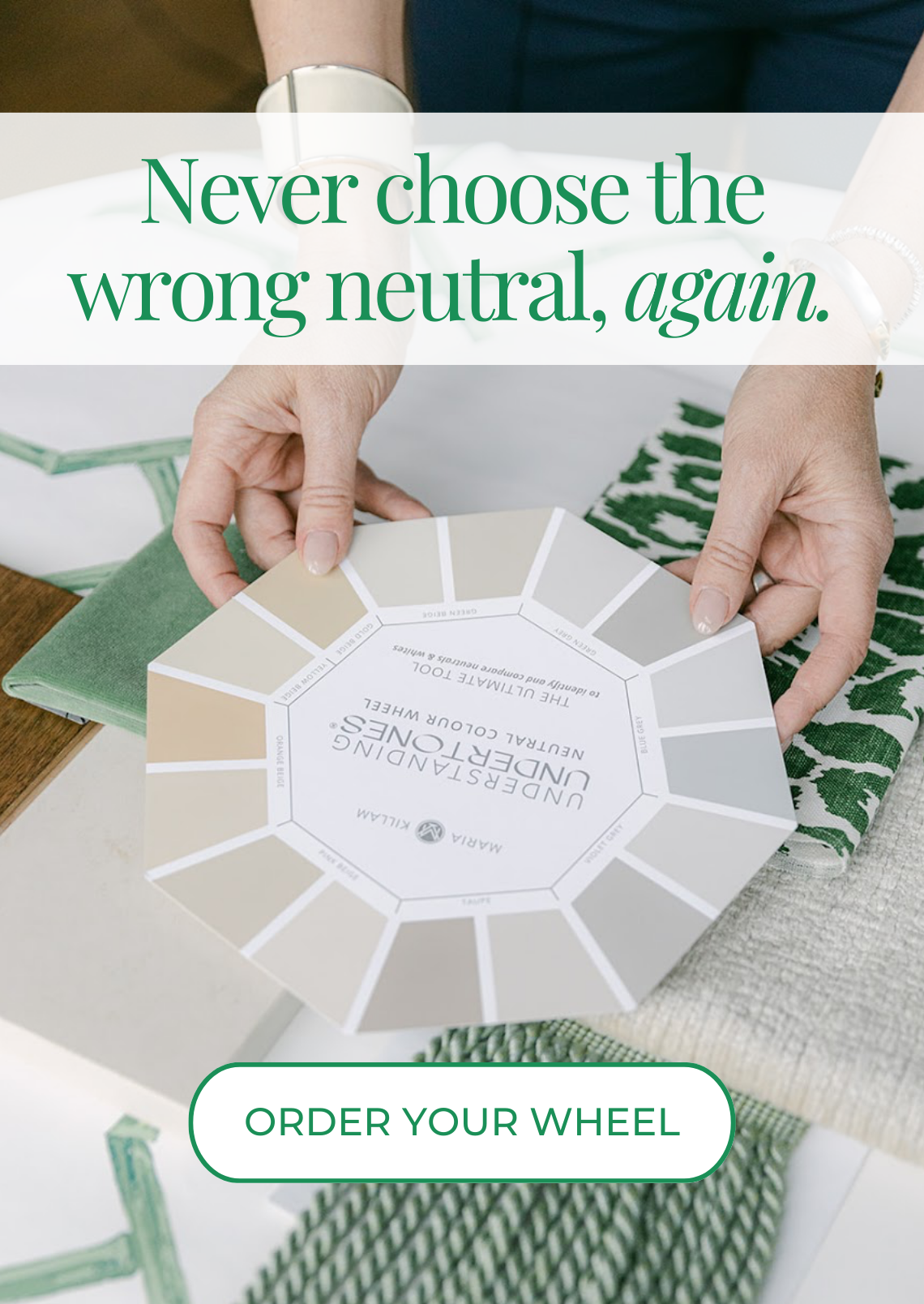
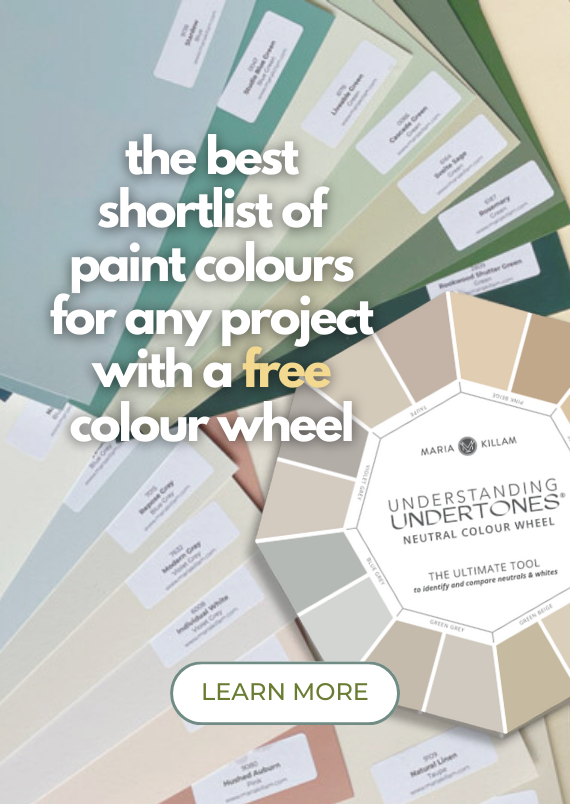

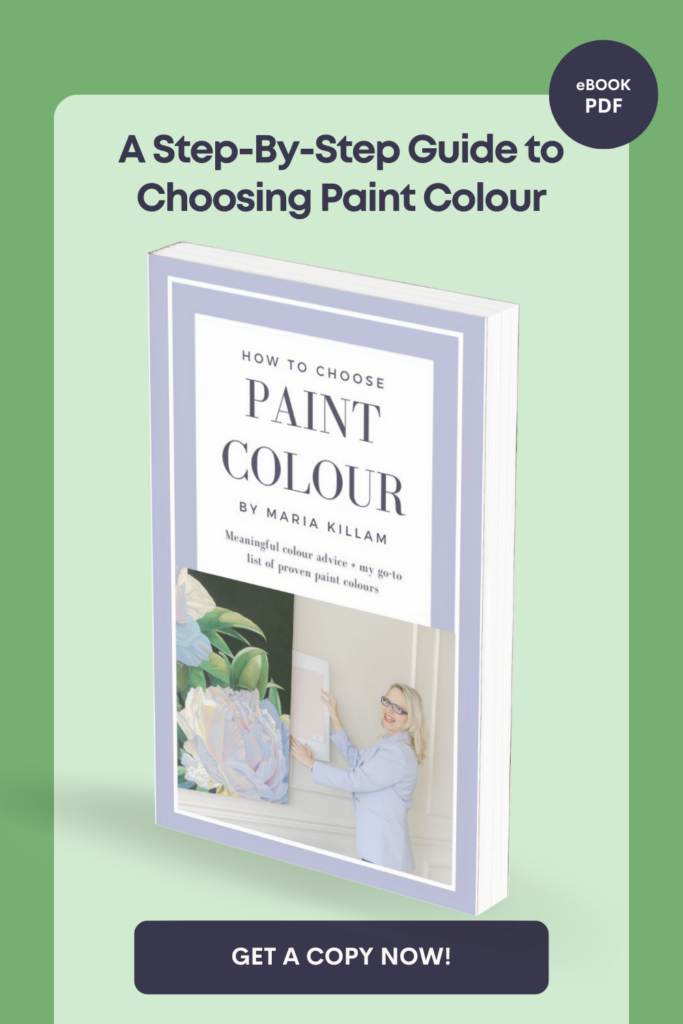

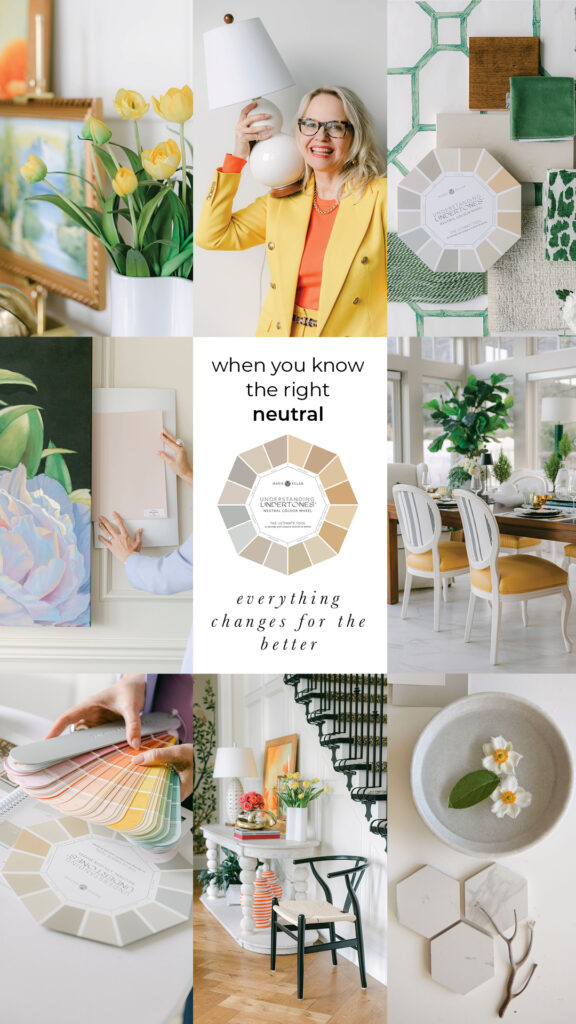

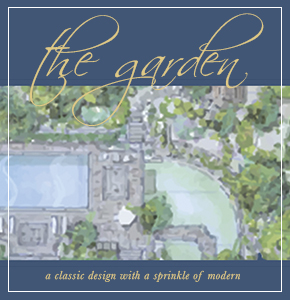



Parisian, the end.
I must admit when someone says they want Tuscan design these days I shudder.
Genuine Tuscan style actually in Tuscany – not Tuscan inspired American – looks better than your examples because it’s in the right context. But I’ll always vote Parisian.
Exactly my thought. The mishmash of a newer McMansion will look bad whether Parisian OR Tuscan. That toned down Tuscan railing looks fine, but the light fixture looks super moden by comparison. I didn’t like the Tuscan trend because, in general, I don’t like the muted orangey yellow palette, but if it were painted Feather Down, that picture of the Tuscan example would be much more appealing to me. Didn’t like the battleship gray look of badly done homes in general either, but in the right setting both battleship gray or orange and yellow can look terrific. Like at the colors at Maria’s house!
Paris staircases look very ornate for my taste .
I wouldn’t vote either of them Paris or Tuscan .
I do like the tone on tone.
Right Maria!!! Let’s not blame the poor wrought iron when there’re so many other elements dating our staircases. Parisian every time for me. BUT if the stair is in context and authentic it’s beautiful in Tuscany or Paris. It’s just our “Tuscan inspired” stuff here in the US that’s so ersatz. I know you’ve been to Italy and the villa staircases there are just as swoon worthy. I have a staircase soooo much like the one in the US home you’ve posted above and have been wondering what to do to help her. Thanks for the food for thought. Xoxo. (Looky! I now have a website with my True Color Expert button linking to you my dear!)
Haha, I stand corrected, obviously I did not look hard enough online for an original and authentic Tuscan staircase, there are too many bad ones from the recent trend as many have already said in previous comments! I love my readers comments, they make the post so much better, thanks everyone! Maria
I’m thinking a travertine stone floor with slightly ornate railing, like your very top picture with the Greek Key symbol, but only the wrought iron color and still debating about a wrought iron banister vs. a wood banister since the upper floor will have wood floors, what do you think? 🙂
Context is everything. Full-on “Tuscan” looks amazing in gorgeous warm Tuscany. Full-on “Parisian” looks the sophisticated and timeless in chic Paris. Both full-on styles used out of context (American or Canadian suburbs) just look “themey” and too whimsical for most.
“And it got me to thinking” are words that explain why I’ve been a devoted follower and student of yours for many years. Yes, you have strong ideas and beliefs but you’re also open to new ideas and perspectives when you’re presented with new information. This is your third trip to Paris. You’re still enamored with the beauty that Paris has to offer yet you’re also looking at it through the eyes of Terreeia who is there for the first time.
From the very first time I went to Paris I, too, was enthralled with its architecture, the large front doors, the flowers and gardens and the timeless and classic elements in large commercial spaces as well as small residential properties. There truly is a ‘joie de vie’ that’s invigorating and inviting.
“And it got me to thinking” … whether a staircase is intricate and ornate or simple and plain is not as important as the sum if its parts. The combination of fixed elements, those timeless and classic elements, are what create the harmonious and welcoming feel to a space.
Maria, the same concept of ‘timeless, classic and harmonious ‘ applies to how you write. From the very beginning your columns and articles connected with your reader because you speak with honesty, clarity, directness, and a fresh eye. You’re willing to stop and evaluate a situation, not just to prove that you are right, but to learn, share and educate openly with all of us.
I’ve been to Paris four times and can’t wait to go back once more. With your current trip I feel like I’m traveling along with you. Thank you so much for sharing this adventure with all of us.
Elynn, thank you for your thoughtful comment! I so appreciate what you wrote! Maria
The most beautiful staircases are in Mexico! Oh my goodness, some may think I am strange, but I am enchanted by the beautiful staircases and have so many photos from so many different places. Just so gorgeous. Haven’t seen anything as nice in Europe. And the balconies, too, of course.
What passes for “Tuscan” in North America bears no resemblance to what you would see in Tuscany, so . . .
So many people have boring tastes (varies by region), but probably taste in North America is a response to what buildings are here. People will say they hate something, and then visit a historical house or go to Europe, and love the thing they thought they hated.
It’s all in the context. The curvy iron staircase in that new build doesn’t fit the surroundings, and the curves feel too tight and constrained. That ironwork doesn’t look like any traditional ironwork I’ve ever seen. It’s a double whammy of a mistake.
Parisian!
I wonder if it’s the stone and concrete that works better in Paris. Wood would need to be very substantial to go with so much stone. Whereas in a typical suburban build, it’s lighter materials all around – – wood, carpet, drywall, and the ironwork is tacked on.
Parisian ✅ gets my vote lol.
Based on the photos here Parisian is my vote.
But I would want to see an original Tuscan villa to compare.
If you were to update or transform the “Tuscan” staircase at the end of your article, where would you start? White paint, course–Would you change the stain on the railing? What would you put on the stairs themselves–all assuming money is no object and you just want it to be beautiful? Would you keep the existing wrought iron or replace it?
As others have said, the American version of Tuscan is nothing like authentic Tuscan. If you look at Tuscan real estate in Italy, you don’t see any staircases like the one shown in your post. Authentic Tuscan design is much less ornate and more utilitarian, which, to me, makes it much more beautiful. Of course, to compare Parisian, which is known for being over the top excessive yet beautiful, design to Tuscan design, which is authentically more simple, there is no comparison. They’re completely different, yet completely appropriate to their respective regions. It’s only when it is over embellished (Yes, Parisian design can be over embellished) by the American interpretation that it becomes dated and less classic.
Which one of these things doesn’t belong? Remember from Sesame Street? Haha. That American staircase is bad…too curly and ornate. At least paint the brown parts black!
So beautiful Maria! Thanks for bringing us along! Oh and Parisian all the way – the architectural detail is swoon-worthy. Have a wonderful adventure!
I vote for genuine, whether it’s Parisian or Tuscan! Here’s why: The Tuscan staircase above is a standard builder-grade type, and the dark wood floor adds to the heaviness, especially since it appears to be engineered wood with very consistent man-made grooving. I agree with others that it’s very unattractive and nothing like the real thing, but most consumers can only purchase what is offered by the builder or in the big box stores. High end is out of the question for many people.
The beautiful Parisian staircases you’ve shown, however, are the real thing, featuring original, genuine materials…note there are no heavy wood handrails. The flooring is made of natural tile or stone, or real wood parquet. Much better! If we were to see the “North American” builder version of Parisian, I have a very strong feeling it would be as unattractive as the Tuscan version.
Yes and that’s what I was trying to say, that when I see the really busy staircases (I had a hard time distinguishing with photos online whether the bad ones were actually bad Parisian or bad Tuscan replicas. Such great comments on this post, very thought provoking. . . thank you everyone! Maria
I wonder if a small problem with the American versions of these staircases is our building codes. I think no opening can be bigger than 4″s at least In my county anyway.
I thought the same about building codes, which would be a limitation the designer has to incorporate.
I agree that what we see here is faux Tuscan, but I also think that it is a question of scale. There are several ‘busy’ Parisian staircases…but they are in grand buildings not homes with 8-9 foot ceilings.
When designing a staircase every designer and/or architect has to take the local bylaws into considerations. These bylaws often dictate that no openings can be wider than 4″ to prevent injury or worse in small children. To a large extent this limits railing designs. Additionally, the cost of any of the staircases shown are really up there and most people will not spend that kind of money on a staircase. So, yes, from a design point of view a Parisian or Tuscan style stair railing would be great, from a legal, practical and budget point of view I doubt they will ever become popular in North America. After over 25 years in the business of design few people have opted for a wrought iron railing even though I recommend them first and foremost….
Paris AND Tuscany, but both in situ. Perhaps here for either, but with only a nod to that style, not an attempt to replicate. And the unfortunate thing about Paris patios is you can’t enjoy the view because you can’t see through all the cigarette smoke. It’s so unfortunate but it is their culture and their home. I hope that changes soon.
It’s the materials. They just don’t build them like that anymore. It’s unfortunate, but modern building materials have a cheaper quality.
I like most of the ones you’ve pictured style-wise. Safety-wise, though, a couple of the ones in France appear to have large gaps that toddlers could slip through, making me shudder. Thankfully, we have building codes.
I’m loving this post and the comments, especially the acknowledgment that it all depends. I have to say though that I’m with Barbara regarding the staircases and balconies of Mexico. Of course, that might also have something to do with the sun there. ?
Different climates and cultures …. different styles. It is like comparing apples and oranges. Not comparable. Anything else in Tuscany would look odd. And Paris buildings are what says Paris They are beautiful especially now that the government forces everyone to wash their buildings and keep them clean. The pollution in Pari makes a mess.. But it is also the beautiful colors used on the storefronts. Paris is a city full of the most beautiful color.
I have always loved black and white checkerboard floors.i had them in a kitchen, vinyl tiles which were hard to keep clean. They are a classic!
I always learn something from you, Maria. Thank you for sharing your epiphany and the thought process behind it. It’s great that you continue to reevaluate and adjust your points of view. This is why your emails are the first and often, only, emails I read each and every time I receive one. Have fun in Paris!
Even the most dedicated craftsman in the U.S. would have difficulty duplicating the grace of traditional design from the 1800s. The knowledge of proportion is largely gone, once studied and handed down from master to apprentice and incorporated into the construction manuals and pre-fab products of their time, drawn by hand by draftsmen and architects who spent years learning their craft. Architects then spent years laboriously measuring and copying classical models, and then were able to riff off them. It has all been replaced by building standards designed for safety and standardization and to minimize labor.
Decoration has become an add-on flourish, often ill-thought out and not integrated into the design. I do think things have improved in the upper end of the market, but even some expensive homes can not quite get everything right. So we have to hire designers to decorate and minimize the flaws. Old House Guy blog is a great resource for pointing out the differences between traditional design and modern replacements that are only somewhat similar. “Get Your House Right” by Sarah Susanka (of The Not So Big House fame) is another great resource to avoid the worst mistakes of modern traditional home construction. I keep waiting for a tollow-up that delves into other styles.
In Europe, these trades still exist and receive government subsidies, But even there, ordinary homes and buildings are being over-renovated and wood windows are being trashed all the time, and there are not enough skilled craftsmen to go around. But they are at least surrounded by many fine examples and towns retain much of their low-rise character. In is not by accident that Disney hired European production teams for “Beauty and the Beast” to create an imaginary world that although exaggerated, is clearly ground into a deep understanding of historic building styles and ornament.
in the US there are tax breaks for large historic preservation projects with a lot of paperwork, but little support of the trades and trade schools in traditional building techniques. Only a handful of private school exist, mostly in New England. The apprentice system was largely dismantled in the 60s and 70s because of racial bias, but a short community college course isn’t a replacement. Now even the old-timers who came of age during the last blush of traditional building construction in the 70s are retiring, and finding labor to repair, much less build in the manner of old buildings is becoming more difficult, especially outside of major urban areas.
Maintaining old buildings has all been waived off as impractical and expensive, and old buildings are considered obsolete (largely because of mechanicals and neglect). I hurts me to see this happen with so little care for our history or for the utility that even a simple home has provided. The embodied energy (all the energy it took to grow and harvest the lumber, manufacture and transport the building materials and build the structure) in a typical house is far greater than any energy “saved” in a new home. Our government policies do not take into account the full cost of demolition by neglect. There are provisions to exempt old houses from certain standards, but many building inspectors are not aware or set the bar too high because the rules are subjective. It takes a lot of work to fight through to do what is right for your old house, and convince your contractor to do things, even things as simple as molding, “the old way.” I know, I own two old buildings, both simple homes and style mutts, and I am not a purist.
I still hope that someday we will value our history and architectural heritage and follow policies that favor redeveloping our existing towns and cities over building on new ground, ever more spread out. I am not against new buildings, but I wish we were more thoughtful in their design.
I was waiting for some interesting and educated responses to this post! Thanks so much for this thoughtful comment! Maria
I’m happy you had an enjoyable trip. So funny how tastes differ. To me, the uniformity of the buildings in Paris is suffocating. While the individual photos you’ve posted are each beautiful and I love the style, the architecture of the city itself is monotonous to an extent that I find oppressive. Other cities that have retained the variations of architecture down through the ages are much more appealing to my eye. I’m guessing those appear chaotic to you. People are fascinating.
parisian! however, I love staircases and banisters no matter how they are. I take them as a fixed design element and make them work, especially if they are wrought iron.
never liked American Tuscan design, too much brown, (and brownish yellow) my least favorite color. Heavy and dark.
much prefer clean, light and airy.
Parisian all the way! Love Paris and all the design and architecture that “makes” it! (Of course, there is the history as well I suppose!) Love your photos of the staircases and cafes.
I just noticed that the “Tuscan” American style has the wrought iron balusters combined with wooden hand railings and wooden newel posts, while all the Parisian staircases were completely wrought iron. Maybe that’s one reason why the “Tuscan” looks so bad, more of the “too much going on” that you pointed out Maria? I think both bad staircases would be somewhat improved if they were all wrought iron. Still not up to Parisian standards, but better. Thanks for continuing to help me train my eye Maria!
Both are beautiful but a really ornate staircase will never have the same effect to me unless the home is actually in Paris or Tuscany, or if your property is located in a historical centre such as Old Montreal, for example, where you are surrounded by numerous similar stone buildings steeped in history. The characteristic grand European stone stairs, off-white aged plaster or stone walls, Parisian mansard roofs, the time worn patina and the focused attention to detail and craftsmanship cannot be recreated and tends to look less impressive when translated into a North American suburban house built with drywall and 2 x 4/6s. All of the senses come to life in these old European buildings. They even tend to have a certain smell (slightly musty but not offensive) that you just can’t recreate (or maybe don’t want to) with new construction. Definitely, a nod to these styles can look amazing and classy (simpler wrought iron designs, boxwood topiaries, black planter boxes) , but when you get really ornate with the details in a new home, it can look overdone fast without the rest of the history to back it up. I do think it can work for commercial projects where you have a Parisian or Tuscan theme in mind. BTW Maria, if you have ever been to Coombs near Parksville, they have done a pretty tasteful job of recreating a bit of that European feel without going overboard. They used a plaster look on the exterior of the buildings, but my husband tells me it’s not a good match for our climate here:( Too bad as it’s quite beautiful.
OK now I’ve GOT to go to Paris, how gorgeous!
It’s so interesting that it’s the wood railing that ruins most Staircase designs.
Scrolling through the beautiful photos, it seems the iron/steel hand railings, just blend in beautifully with the vertical balusters and newel posts, no matter how busy they are. But the wood always seems to look like it’s just ‘plonked’ on top!
Same material for both, just works beautifully!
Brilliant post as always! Enjoy! xo
PS I found myself saying “Hm,, nope that one doesn’t pass code, that one does… ” lol
Someone may have already said it, but here in Canada we have to abide by building code and staircases cannot have an opening larger than a ball sized to represent a child’s head. I can’t remember the exact dimensions, but it’s to ensure that a child cannot slip through and hang by its head (its largest dimension). When I learned that, I look with alarm at staircases (no matter how beautiful) that could be a death trap.
Beauty is in the eye of the beholder, and I would vote for both Tuscan and Parisian in the typical cultural/historical environment, but I wouldn’t bring it into my home on any grand scale.
My eyes and senses are calmed by clean, light and sparse surroundings with warm light sources. Curved metal, curved concrete give a feminine look to hard materials, so Paris to me feels like a beautiful, complex woman with light and dark contrasts of shadow and mystery. But yet Paris can often be all about flat surfaces, hard corners and edges, straight lines and minimal clutter, which give way to an often masculine esthetic. So I think Paris is a really interesting place, where it celebrates both the masculine and feminine side of design. I’m not one to surround myself with so much ornate style as Paris or Tuscan, however, I do enjoy visiting playful and artistic spaces that celebrate style in unique ways. I guess what I’m trying to say is that I find those playful, detailed, bold, patterned, flowery, shiny and textured spaces like a party that I’m very excited to attend, take in all the delights, smile a lot, and then go home to my very simple space with lots of windows to watch the birds.
That’s why I follow Maria’s blog, she knows how to balance all the playfulness of design without getting tacky about it. I’ve learned a lot and have become a bit bolder in bringing unique design and color elements that match my ‘nature’ esthetic without having to give up my need for a light, airy and outdoorsy look.
Well, you’re comparing authentic so-lovely-it-survived-hundreds-of-years-without-being-ripped-out Parisian style with 1980s “Tuscan-inspired”. I imagine there are lovely 200 year old authentic staircases in Tuscany too. And bad “Parisian-inspired” looks. It’s not the wrought iron railing that’s the problem, it’s the jumbled mish-mash around it, and the fact that it’s out of place in a modern suburban house.
I agree with what you’re saying and honestly, I don’t know enough about Tuscan design to be able to spot an authentic staircase even though I tried to find one online. Every time I saw one that I liked, it simply looked Parisian to me, haha. Thanks for your comment! Maria
You have described my exact thoughts perfectly! Perhaps true Tuscan is very closely related to true Parisian style, explaining how similar they looked as Maria researched. Context is so very important!
Such an interesting (and timely) post. Just today, I read an article written by a realtor. The article was giving advice to homeowners about looks to avoid if you EVER wanted to sell your house, LOL! One thing that caught my attention was the assertion that black and white permanent features (like flooring) should be avoided because it’s too bold for most. I LOVE black and white marble flooring….it’s still on my bucket list as a “must own”. I think it is so beautiful and a true neutral classic, complimenting traditional and modern decor schemes equally. What are your thoughts?
Yes I mentioned that in this post, it’s classic and timeless and works with everything. Likely the realtor has seen it done badly (which is certainly possible) and that’s why he wrote that it was ‘too bold for most’. Thanks for your comment! Maria
I believe that good design also respects the geography and climate. Colors and materials that are suitable in one location may not work in another with different light and temperatures.
Yes – you need to honor the style of your community.
Once again, you nailed it!!! Paris all the way!! I would take a can of black paint to the brown wood railings.
Absolutely Black-and-white or really beige and dark charcoal checkerboard flooring in its many variations is a timeless classic and has been my preference for an entrance forever please make it more widely known and chosen black-and-white or really beige and dark charcoal checkerboard flooring and it’s many variations is a timeless classic and has been my preference for an entrance forever please make it more widely known and choosen – also the Parque wood flooring why isn’t this more widely available to install tile like I have seen it in a laminate but laminate can’t get wet I don’t like
Hi Maria,
For me, the less wrought iron the better. I don’t care for all the ornateness of it all. If it was a very simple, bare design I could appreciate it.
Parisian style is the classic by which all others are judged, IMO.
I love the Parisian staircases because they look romantic and more feminine. The Tuscan style to me is more of a masculine feel. There is so much beauty in each country but I definitely prefer the beauty of France. Love all of the pictures of your trip. So much fun following you!
Parisian is my jam when it comes to the staircase and iron work! Thanks for sharing the beautiful artwork?
I think Haussmann was drawing inspiration from the Baroque era. That one photo you have is from Versailles, built in the 1680’s (Baroque Era). Haussmann started rebuilding Paris in the 1850’s (“Victorian Era”). Marble flooring is great if you can afford it :). I’m still looking for authentic examples of Tuscan staircases!
Staircase from Florence, designed by Michelangelo
http://community.artauthority.net/work.asp?wid=24626&pos=251
Thanks for explaining that going to Paris made you like the look of busy, ornate iron railings. My husband and I want to have an elegant railing added to our custom home. Your article made me excited to look at our iron railing options.
Vive la France (and Paris)!
Paris created the”memo” about the sidewalk cafe and AND the style- it’s everyone else who received the memo.